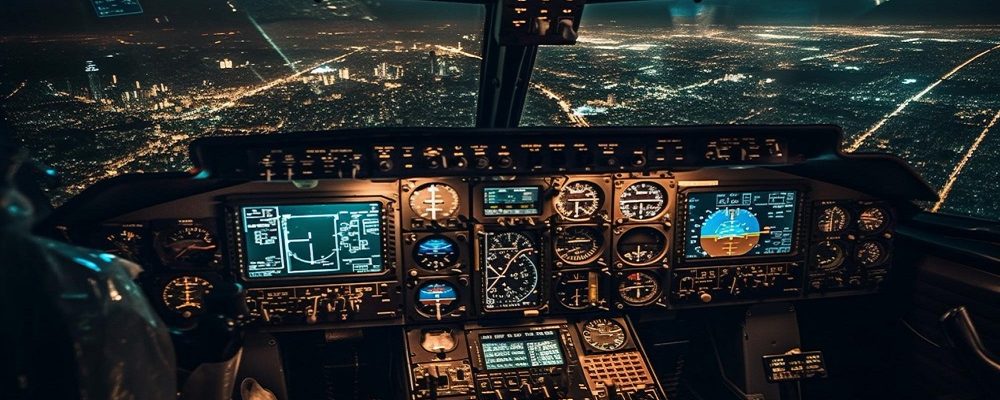
The Future of Aviation Industry – Pilot Training with Mixed Reality

The Future of Aviation Industry – Pilot Training with Mixed Reality
In this modern era, the operation and maintenance of modern aircraft require specialized training that encompasses multiple interconnected human and machine components requiring practice and immersion. Our next generation of aviation professionals entering the industry should learn these new methods for operating the aircraft.
How is Mixed Reality used in Pilot training?
With the introduction of mixed reality (MR) into pilot training programs, the aviation sector is undergoing a revolutionary change. Mixed reality combines the best of virtual reality (VR) and augmented reality (AR) to create immersive and interactive training environments. It enables trainees to engage with virtual instruments, enter cockpits, and experience realistic flight scenarios.
Let’s see various aspects of mixed reality in pilot training.
1.Virtual Cockpit Simulation
High-fidelity and realistic virtual cockpits of different aircraft types can be created by MR systems. With the use of MR headsets, trainees can enter virtual cockpits to have an immersive experience.
2. Realistic Flight Scenarios
MR provides a large collection of training situations covering everything from take-offs and landings to varying weather and in-flight crises. Trainees can practice and experience these scenarios in a safe and controlled environment.
3. Interaction with controls
The trainees can easily interact with the controls, switches, and instruments of the virtual aircraft. They can operate the throttle, yoke, pedals, and other controls exactly like they would in a real cockpit.
4. In-flight Dynamics
By simulating various aircraft’s flight dynamics, MR systems provide learners with a real understanding of how an aircraft reacts to its inputs. This helps trainees become familiar with the aircraft’s behaviour.
5. Customization
MR training scenarios can be customized to meet the specific needs and proficiency levels of individual trainees. This personalized approach guarantees that learners receive focused interaction and assistance when required.
6. Safety and Risk management
There is no risk involved in virtual training environments and is completely safe. Without worrying about accidents, trainees can make mistakes and grow from them, improving overall safety and risk management.
7. Time and Cost Efficiency
MR training saves a lot of money by eliminating the requirement for costly flight hours and actual aircraft. By logging many flight hours without having to take off, trainees can lower operating expenses.
How Aviation Companies are Using Mixed Reality
Mixed reality (MR) technology is being used by aviation industries in a variety of ways to improve customer experiences, operations, training, and maintenance.
1. Train Pilots and Simulation
Aviation companies are leveraging MR to provide realistic pilot training and simulation. This includes cockpit familiarization, flight simulations, and emergency response drills, which give students real-world experience in a secure environment.
2. Maintenance and Repair
MR is employed for maintenance and repair procedures. Maintenance technicians can diagnose problems, carry out repairs, and carry out routine inspections more effectively by having access to digital overlays of aircraft components, schematics, and maintenance procedures.
3. Aircraft Design and Prototyping
MR is used specifically in design and prototyping. Designers can visualize and create virtual 3D models of aircraft components and interiors, streamlining the entire design process.
4. Air Traffic Control Training
Controllers can practice managing air traffic in virtual environments, honing their skills, and handling complex scenarios, including emergencies and adverse weather conditions.
5. Flight Planning and Navigation
MR applications assist pilots in flight planning and navigation. Virtual overlays provide real-time weather updates, navigation charts, and flight data, enhancing decision-making in the cockpit.
Sum up
Pilot training with MR has a bright future, as these trends and advancements will influence how future pilots will be trained. MR simulations will become even more realistic like real life. To further enhance the training experience, these simulations will have realistic weather, improved physics of engines, and incredibly detailed virtual cockpits.
With the use of holographic displays and headgear, virtual and real-world aspects will blend more naturally. On top of actual aircraft parts and instrumentation, trainees will be able to see and interact with virtual items, controls, and displays. Pilot training with MR has a lot of potential and gives flexible experiences according to individualized needs. The aviation industry will eventually employ safer and more skilled pilots as MR technology develops and prepares more skilled aviators.